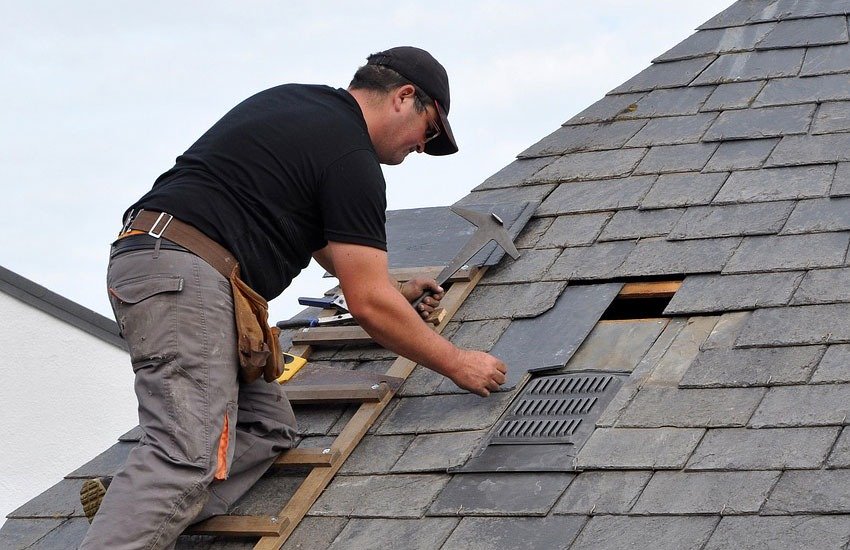Your roof isn’t just a cover: it protects everything inside your home from rain, snow, pests, and more. Rooftops endure heat, ice, strong wind, and sunlight. That means you’ll need different types of work over time. Learn what roofing services typically cover and how to know when a roof replacement is the smarter choice.
- Common Roofing Services Homeowners Book
Homeowners often schedule several key roofing services to keep their home in top shape. Most trusted contractors offer services including the below:
- Roof Inspection: A professional walks the roof or uses drones to spot gaps, sagging shingles, or failing flashing. Prevention catches tiny issues before they grow.
- Roof Repair: Fixes small leaks, missing shingles, or flashing cracks. Repair can extend your roof’s life without a full replacement.
- Emergency Storm Repair: After hail, wind, or storm damage, homeowners can schedule urgent repairs to stop water damage fast.
- Routine Maintenance: Cleaning gutters, replacing caulked joints, and checking vents helps prevent moisture buildup.
- Roof Replacement: Taking off the old roof and installing a new one. This usually happens when the roof nears the end of its lifespan or has extensive damage.
These services work together to protect your home and delay big-ticket repairs or replacements.
- When It’s Wise to Plan a Full Roof Replacement
A complete roof replacement is a big investment, but at a certain point, it becomes the more cost-effective, safer option. Consider replacement if you notice:
- Persistent leaking, moisture, or sagging
- Aging shingles past 20–25 years of wear
- Multiple repairs adding up in cost or hassle
- Interior water stains on ceilings or attic walls
- Sudden spikes in heating or cooling bills (indicating insulation failure)
Delaying replacement can lead to damage inside your home or even structural issues.
- What a Full Replacement Entails
Here’s how roofing professionals typically tackle the job:
- Remove old roofing down to the sheathing or decking
- Check for damaged boards and replace as needed
- Apply underlayment and waterproofing layers (like ice and water shields)
- Install your chosen roofing material (asphalt, metal, etc.)
- Add siding edge protection like drip edge and ridge cap
- Clean up thoroughly and ensure gutters and ventilation are intact
This process restores heating efficiency and strengthens the home’s weather protection.
- Key Benefits of Repair vs. Replacement
Here’s a quick comparison to help you decide:
| Roofing Service | Best Use Case |
| Repairs & Maintenance | Fix minor damage, extend current roof’s lifespan |
| Regular Inspections | Spot potential issues early, avoid costly fixes |
| Emergency Repairs | Protect home after storms or unexpected damage |
| Roof Replacement | Replace aging or extensively damaged roofing |
If your roof still performs well and shows only wear in small areas, repairs may be ideal. But if damage is widespread, a complete replacement ensures long-term safety and performance.
- Tips for Planning a Replacement
- Schedule inspections in spring or fall for the best weather window and reliable estimates.
- Ask for a written breakdown of costs, including materials, labor, and clean-up.
- Confirm warranties (material and installation) to protect your investment.
- Clear the roof edges of plants or debris to give contractors ready access.
A little planning makes the process smoother and fairer.
Final Thoughts
Roofing services are more than simple fixes or material swaps. They safeguard your home’s structure, energy efficiency, and exterior appearance. Minor repairs or preventive maintenance help keep costs down, but knowing when to opt for a roof replacement matters. A well-timed roof replacement means a durable, weather-tight home free of leaks and worry for years.
If you want to make sure you’re getting the right work in the right season at a fair price, start with a trusted contractor who walks you through each step and values your home as much as you do.
Before you commit to any major roofing work, ask yourself a few key questions: Has my roof been inspected in the last year? Are repairs becoming more frequent and expensive? Does my home feel less comfortable during extreme weather? These are clear signs that it’s time to stop patching and start planning. A professional inspection can confirm whether roofing services like maintenance or targeted repairs will work, or if it’s smarter to go with a roof replacement. Remember, waiting too long can mean water damage, mold, and higher energy bills. Acting early protects your investment and your peace of mind.



 :
:









